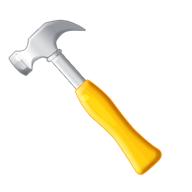1 min read
Is Your Shop Floor Hammering to Make It Fit?
Most manufacturers know quality and efficiency would suffer if they asked their shop floor to use the wrong tool, but all too often that’s what...
2 min read
David Oeters : May 5, 2015 at 6:19 AM

 Today, new technology and applications for manufacturing are flooding the market. Companies are trying to capture Smart Manufacturing lightning in a bottle for quick profits, or discover how, exactly, the Internet of Things (IoT) is going to work. Every one of these products promises they can make everything better with their application, or system, or plug-on (or –in), or tool, or some other magic widget that will add instant Industry 4.0 deliciousness to your existing MES or paperless manufacturing system.
Today, new technology and applications for manufacturing are flooding the market. Companies are trying to capture Smart Manufacturing lightning in a bottle for quick profits, or discover how, exactly, the Internet of Things (IoT) is going to work. Every one of these products promises they can make everything better with their application, or system, or plug-on (or –in), or tool, or some other magic widget that will add instant Industry 4.0 deliciousness to your existing MES or paperless manufacturing system.
There is so much noise out there; it’s difficult to separate hype from truth, or fact from fiction. Products can promise the world, but in manufacturing if it’s not improving workflow and processes, it’s not worth it. A new manufacturing tool or system must be implemented with operational need in mind, and not just for the flashy “new-ness” of it.
Even so, manufacturing leaders must work to maintain a competitive edge, and be prepared to seize the opportunity offered by new technology. In a tight market, even a small improvement can lead to increased profit. You need a tool to evaluate new technology for potential benefit. With that in mind, we’ve prepared 4 critical questions you can use to more accurately evaluate new technology. As you ponder the promises made by a tech company, consider the following:
From our experience, most companies install new software or technology to solve a specific problem. It might be a failed audit, or out of control paper on the shop floor or inscrutable production documents stored in boxes. Before installing a new tool, evaluate the benefit. Will it solve a specific problem? How will it improve operations? Don’t add functionality without a clear benefit.
You will need an objective way to evaluate the new software or tool. The ROI (Return on Investment) is a comparison of the cost of the tool against the benefit of the functionality. Before installing anything, make sure you have an accurate estimate of the ROI. Many of the flashy, shiny new tools will offer “Wow” factor with little return. A system that offers a low cost solution that improves production in a number of ways will have a much greater ROI.
Static, custom-built software systems are no longer a viable investment. Technology and operational needs change so quickly, the moment you install a system it will begin to lose value. Before you install or implement anything, have an upgrade path in place. What is the TCO (Total Cost of Ownership) of the solution, once you consider the cost of updates? You need a software system that adapts and grows as your needs change.
You need to think beyond the data collected by a new system to determine the benefit. Do you have a way to act on and implement real-time data, or are you still relying on error-prone paper-based work instructions? Do you have machines with an output that can’t be used by the monitoring system? Want to use dynamic scheduling? Make sure you are collecting the data you need to adequately feed the system.
New technology promises to reshape manufacturing in ways that were unheard of a few short years ago. But, you need to approach the marketing promises with a critical eye to ensure you can adequately benefit from the investment, or you aren’t putting your faith in a piece of flashy tech that will be outdated in a few short months.
Got more questions? Contact us for a free evaluation to identify technology gaps that may be holding your shop floor back. We love manufacturing, and we love technology, and we’re happy to help any way we can.

1 min read
Most manufacturers know quality and efficiency would suffer if they asked their shop floor to use the wrong tool, but all too often that’s what...

1 min read
Many companies seek out the biggest MES vendor, believing it is the “best” option for their manufacturing software. That decision is often the...

1 min read
Many manufacturers understand the benefit of an MES for their shop floor operations, but struggle to build a case for implementation. We offer three...